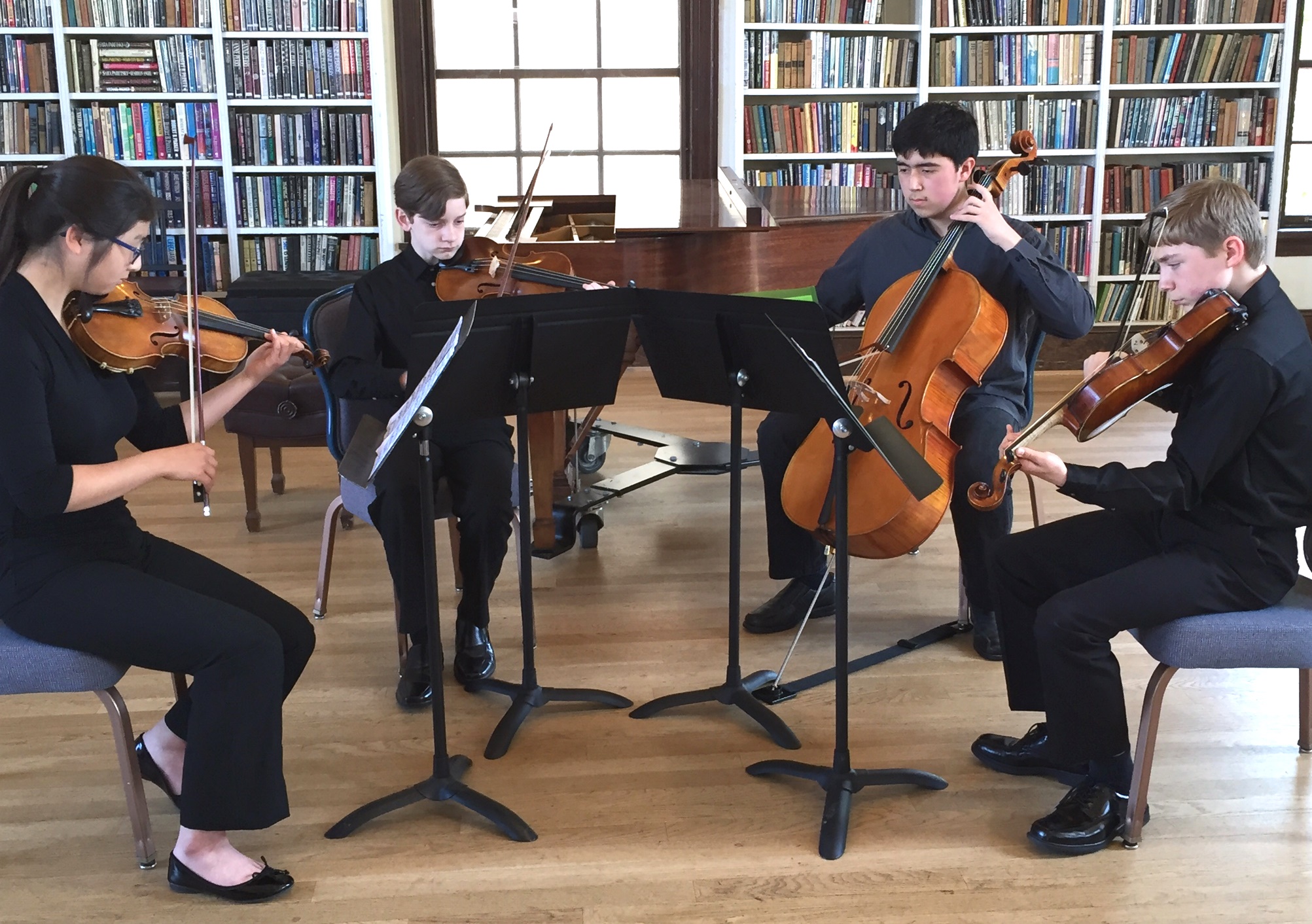We are gearing up for our Fall session of student chamber music group rehearsals, and we want you! If you are a violin, viola, cello, bass, piano or guitar student ages 10-18 with some level of experience, joining a chamber ensemble is an excellent way to gain musicianship skills and to relate socially with other musicians!
“Playing in a chamber group is one of the best ways to take a student’s musical study to the next level,” explained Academy Chamber Coordinator Claire Allen. “The chamber experience tends to motivate and inspire students to practice more, and the additional hour of instructional time expands on the private lesson curriculum in many positive ways. Learning and performing chamber music builds confidence, teamwork, and leadership abilities while developing every essential musical skill: sense of pitch, rhythm, and tone. These skills will cross over to a student’s solo performances and orchestral experiences, making them a much better musician overall.”
A chamber ensemble is a group of 3-6 musicians, playing one to a part, who perform without a conductor. Unlike orchestra, there is no one else playing the same part as you, so you have to know your part thoroughly! However, unlike solo performance, you are playing with others as part of a team. The repertoire written for chamber ensembles is among the most beautiful and unique in the body of classical compositions.
At the Academy, the Chamber Coordinator works with students’ private instructors to place them in a group based on age, playing level, and schedule availability. The chamber coaches select music that is both accessible and appropriate for the group as a whole. Students learn their parts individually at home, and then come to once-a-week coachings with their parts well-prepared. Then, the real work of bringing the music to life can begin!
In a typical chamber ensemble rehearsal, coaches work with the students in a several ways, including:
- Score study is sometimes the first time a student has seen all the different parts of a musical composition – usually they are accustomed to seeing only their part on the page. Part of score study involves a discussion of the musical terms used by the composer, the form and structure of the piece, as well as the ways in which the different parts fit together.
- Music fundamentals are discussed and practiced in the context of an ensemble. Coaches may have students do clapping and counting exercises to strengthen their sense of group pulse and rhythm, or play scales as a group to improve intonation.
- Crafting a musical interpretation is an essential part of the work process. Coaches will guide chamber groups in a discussion of phrasing, dynamics, and character. In some groups, the combination of ideas from all the members will result in a unique musical story that translates to performance.
- Ensemble skills – that is to say, the art of playing together – are at the heart of every chamber coaching. Every aspect of this will be discussed and practiced, from how to cue each other’s entrances, to listening to one’s fellow musicians, to blending the individual sounds into a collective whole.
“Students who have participated in our chamber program have gone on to become leaders in their school orchestras, featured performers in Academy honors recitals, and winners in the Academy Music Competition,” stated Ms. Allen. “Although it is an extra time and financial commitment, the benefits can be profound.”
We accept chamber students from both within the Academy and outside from other studios/ schools as well. Rehearsals are scheduled to start soon, so apply now!

